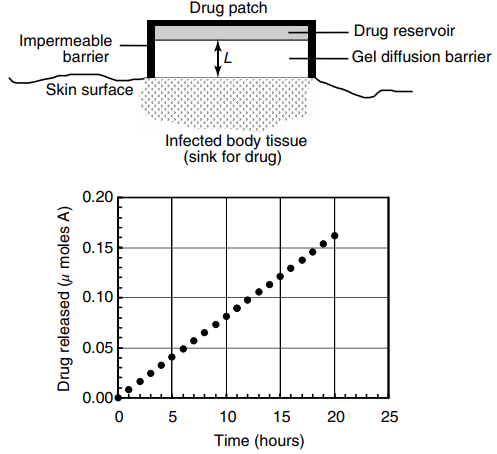Question: Consider the drug patch shown in Problem 26.4. The patch consists of a pure solid drug source mounted on top of a water-swollen polymer, which
Data From Problem 26.4
Consider the €œdrug patch€ shown in the figure on the next page. The drug patch consists of a pure drug source mounted on top of a gel diffusion barrier. The gel diffusion barrier has a thickness of 2.0 mm. The gel diffusion barrier is in direct contact with the skin. The cumulative drug release vs. time profile for a 3.0-cm × 3.0-cm square patch at 20°C is also shown below. Other experiments showed that the drug was immediately taken up into the body after exiting the patch. The drug is only slightly soluble in the gel material. The maximum solubility of the drug in the gel diffusion barrier is 0.50 µmole/ cm3, and the solubility of the drug in the gel diffusion barrier is not affected by temperature.

Drug patch Drug reservoir Impermeable barrier -Gel diffusion barrier Skin surface Infected body tissue (sink for drug) 0.20 0.15 0.10 0.05 0.00 10 15 20 25 Time (hours) Drug released (u moles A)
Step by Step Solution
3.49 Rating (175 Votes )
There are 3 Steps involved in it
A drug B waterswollen polymer Estimate drug ... View full answer

Get step-by-step solutions from verified subject matter experts


